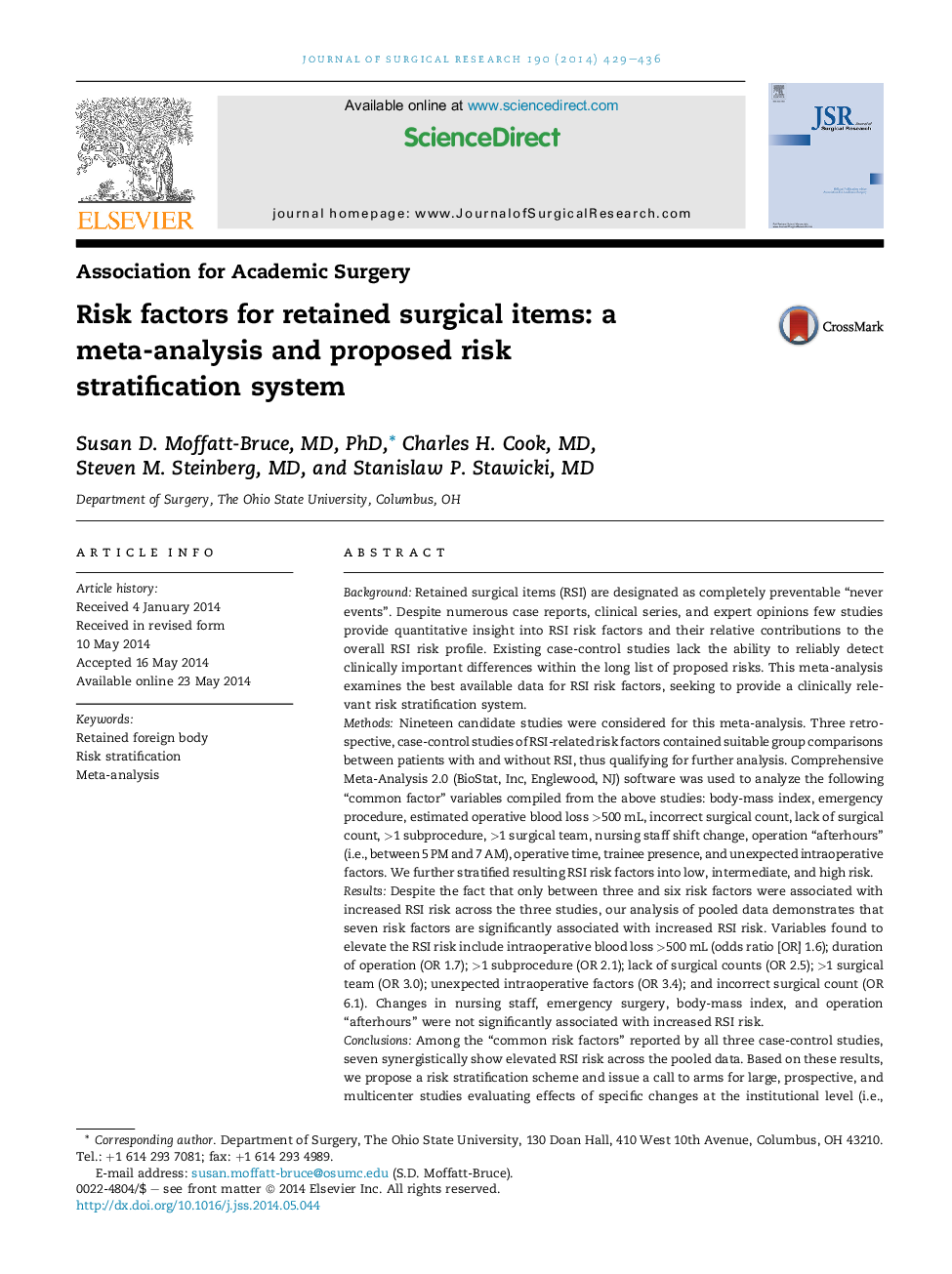| کد مقاله | کد نشریه | سال انتشار | مقاله انگلیسی | نسخه تمام متن |
|---|---|---|---|---|
| 6253904 | 1612527 | 2014 | 8 صفحه PDF | دانلود رایگان |
BackgroundRetained surgical items (RSI) are designated as completely preventable “never events”. Despite numerous case reports, clinical series, and expert opinions few studies provide quantitative insight into RSI risk factors and their relative contributions to the overall RSI risk profile. Existing case-control studies lack the ability to reliably detect clinically important differences within the long list of proposed risks. This meta-analysis examines the best available data for RSI risk factors, seeking to provide a clinically relevant risk stratification system.MethodsNineteen candidate studies were considered for this meta-analysis. Three retrospective, case-control studies of RSI-related risk factors contained suitable group comparisons between patients with and without RSI, thus qualifying for further analysis. Comprehensive Meta-Analysis 2.0 (BioStat, Inc, Englewood, NJ) software was used to analyze the following “common factor” variables compiled from the above studies: body-mass index, emergency procedure, estimated operative blood loss >500Â mL, incorrect surgical count, lack of surgical count, >1 subprocedure, >1 surgical team, nursing staff shift change, operation “afterhours” (i.e., between 5 PM and 7 AM), operative time, trainee presence, and unexpected intraoperative factors. We further stratified resulting RSI risk factors into low, intermediate, and high risk.ResultsDespite the fact that only between three and six risk factors were associated with increased RSI risk across the three studies, our analysis of pooled data demonstrates that seven risk factors are significantly associated with increased RSI risk. Variables found to elevate the RSI risk include intraoperative blood loss >500Â mL (odds ratio [OR] 1.6); duration of operation (OR 1.7); >1 subprocedure (OR 2.1); lack of surgical counts (OR 2.5); >1 surgical team (OR 3.0); unexpected intraoperative factors (OR 3.4); and incorrect surgical count (OR 6.1). Changes in nursing staff, emergency surgery, body-mass index, and operation “afterhours” were not significantly associated with increased RSI risk.ConclusionsAmong the “common risk factors” reported by all three case-control studies, seven synergistically show elevated RSI risk across the pooled data. Based on these results, we propose a risk stratification scheme and issue a call to arms for large, prospective, and multicenter studies evaluating effects of specific changes at the institutional level (i.e., universal surgical counts, radiographic verification of the absence of RSI, and radiofrequency labeling of surgical instruments and sponges) on the risk of RSI. Overall, our findings provide a meaningful foundation for future patient safety initiatives and clinical studies of RSI occurrence and prevention.
Journal: Journal of Surgical Research - Volume 190, Issue 2, August 2014, Pages 429-436
